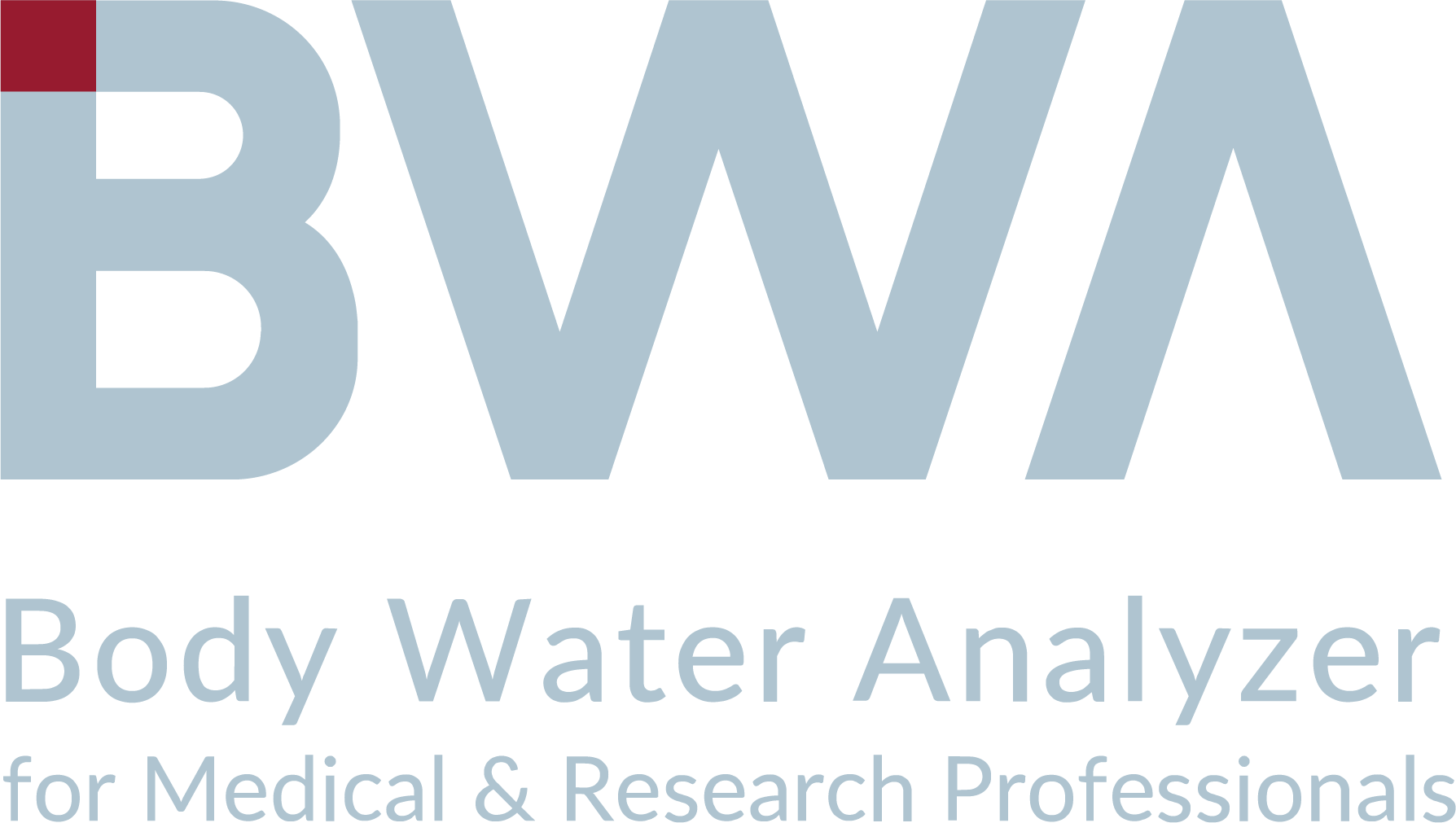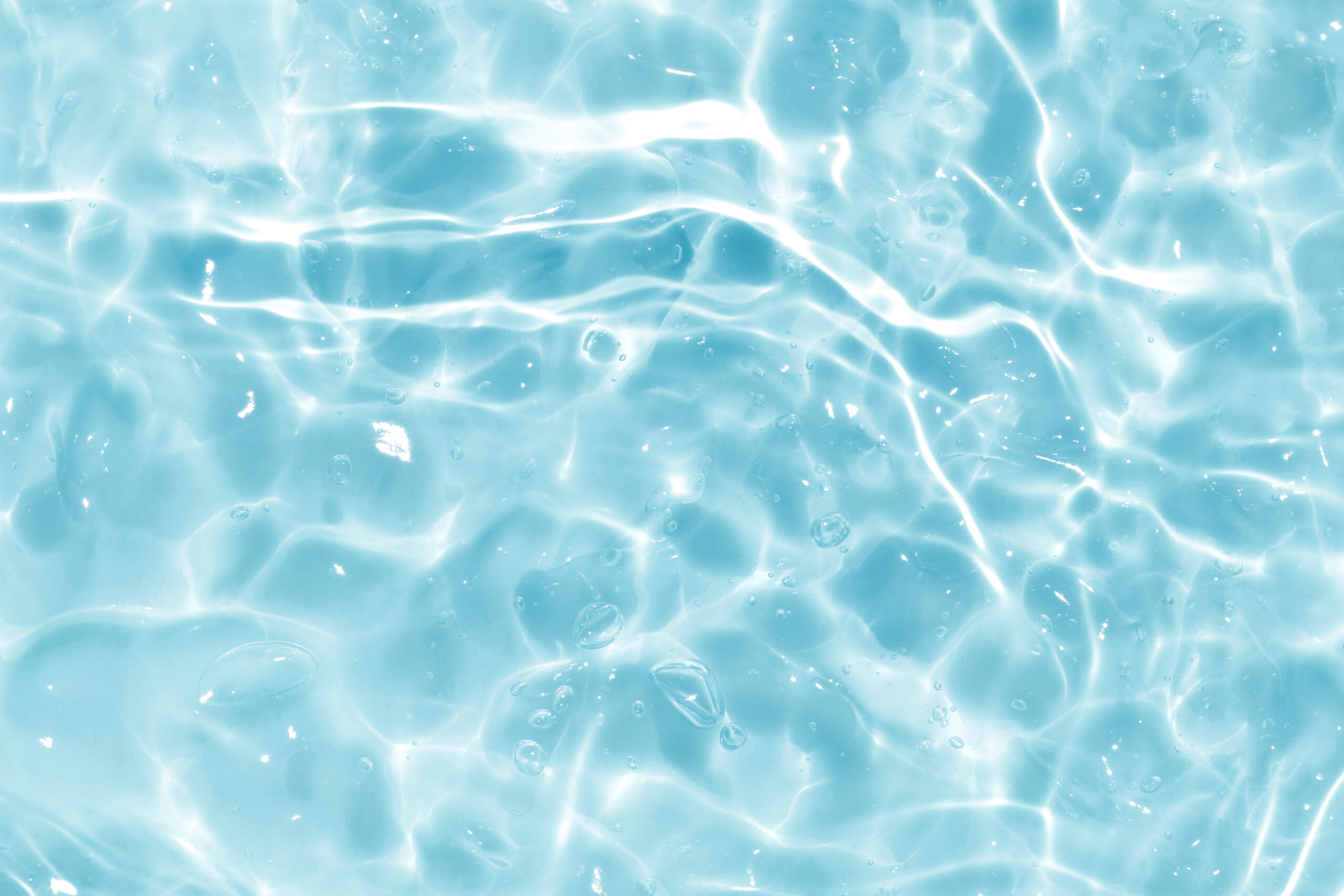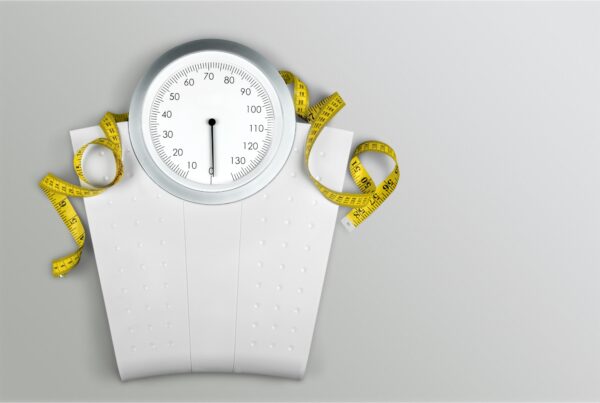“This article originally appeared on InBody USA and is reposted here with permission.”
What Makes Up Your Body Water | Imbalances In Your Body Water | Dehydration and Overhydration | Finding Your Balance With Hydration
Water is a major part of your body: they make up 79% of your muscles, 73% of your brain, and even 31% of your bones. Overall your body weight can be 45-65% water. Your body water percentage is influenced by your age, gender, and fitness level. Even though you are made up of mostly water, how much do you really know about the effect this major element has on your body?
For example, did you know your hydration status is equally as important as getting enough rest and quality food for muscle growth and improved physical performance?
Read on to learn more about body water, the effect of dehydration and overhydration, and tips to keep you in balance.
Body Water, Defined
Your body water can be found inside not only in your blood, but in your muscle tissue, your body fat, your organs, and inside every cell in your body.
The amount of water in your body depends on various factors including age, gender, physical activity, and even where you live. It’s often referred to as Total Body Water (TBW).
For example, infants are born with roughly 78% of their entire weight being water. By one year of age, TBW decreases to about 65% of weight. In healthy adult males, TBW averages 60% of their weight because they generally carry more lean mass. On the other hand, women will see that roughly 55% of their weight is TBW.
Your TBW can be further segmented into two compartments: extracellular water (ECW) and intracellular water (ICW).
- Extracellular Water (ECW)
Extracellular water is the water located outside your cells. The water in your blood falls into this category. Roughly 1/3 of your fluid is attributed to ECW, and this water is found in your interstitial fluid, transcellular fluid, and blood plasma.
Extracellular water is important because it helps control the movement of electrolytes, allows oxygen delivery to the cells, and clears waste from metabolic processes.
- Intracellular Water (ICW)
Intracellular water is the water located inside your cells. It comprises 70% of the cytosol, which is a mix of water and other dissolved elements. In healthy people, it makes up the other 2/3 of the water inside your body.
The intracellular water is the location of important cellular processes, and although it has many functions, a very important one is that it allows molecules to be transported to the different organelles inside the cell. Essentially, the Intracellular water picks up where the Extracellular water left off by continuing the pathway for fuel to be transported to the cells.
Balance is the Key
When it comes to your body water and you, the most important thing to strive for is balance. Your Intracellular fluid: Extracellular fluid must remain at the same levels with respect to each other.
A healthy fluid distribution has been estimated at a 3:2 ratio of ICW:ECW. If your body water falls out of balance, this can signal changes in your health and body composition. Whether these changes are positive or negative depends on which type of water becomes unbalanced.
Positive: Increased ICW
Having slightly more ICW than normal isn’t necessarily a bad thing. In fact, it can signal positive changes in your body composition.
Increased muscle mass is due to the enlargement of the number and size of muscle cells. When the muscle cells become enlarged, they are able to take in (and require) more ICW in order to power their cellular functions. Research has shown that resistance exercise can lead to increased intracellular water in humans as a result of increased Lean Body Mass.
Negative: Excess ECW
If your ECW increases in relation to your ICW, this is something you should take special note of. Unlike ICW, you do not want to see your ECW increasing beyond normal levels. Excess ECW can indicate health risks, including:
- Inflammation
During inflammation, the body sends additional blood flow to the damaged area. This causes an increase in extracellular water in a particular area. Inflammation occurs when part of the body gets damaged or bruised and is a normal bodily response to injury. This is called acute inflammation and is a temporary increase in ECW.
Chronic inflammation, however, is something more serious that isn’t always readily detected. It is marked by long-term swelling/ECW increases caused by cellular stress and dysfunction. Chronic inflammation can lead to serious diseases if allowed to persist over time, including renal failure, cancer, and heart disease. including renal failure, cancer, and heart disease.
Obese individuals are characterized by having too much body fat, which among other things, leads to body water disruption due to excess ECW. This is because excess visceral fat can trigger production hormones that can lead to the disruption of a bodily system called RAAS. This excess ECW causes stress in the body due to its effects on the internal organs, which can exacerbate obesity and cause a dangerous cyclic effect.
- Renal Disease (Kidney Failure)
One of the kidneys’ major functions is to filter your blood and remove toxins produced in the body. One important substance that the kidneys filter out is sodium, an element that is found in salt.
When your diet includes more sodium than your kidneys can filter out, which occurs in people who have failing kidneys, your extracellular water levels will increase. In some cases, this increased extracellular water shows in visible swelling throughout the body and is a condition known as edema. Edema can cause additional strain on the body by contributing to weight gain, blood pressure, and other complications.
Determining Balance

Since it’s so important to keep an eye on your fluid balance, you’ll need to know how you can determine yours. There are two major methods to measure and determine your fluid levels. These are the dilution method and the BIA method.
The dilution method involves drinking a known dose of heavy water (deuterium oxide) and allowing it to distribute around the body. Once the water has had time to settle, the amount of heavy water is compared with the amount of normal water. The proportion will reflect the amount of total body water. To determine ECW, sodium bromide is used instead of heavy water.
The dilution method is recognized as a gold standard for measuring total body water; however, these tests would need to be done at a hospital under the guidance of a trained physician. This test takes several hours to complete during which any fluid of any type going in or out of the body has to be carefully recorded.
For these reasons, you’re unlikely to have this test performed unless your doctor needs to know your total body water with absolute certainty because of a serious health complication.
The second, more accessible method to determine body water content is bioelectrical impedance analysis (BIA). For most people who do not have serious medical issues, this method is much more practical than the dilution method.

A small electrical current is applied to the body and the opposition that current experiences (impedance), is measured. From that impedance result, a BIA device can report your body water percentage. Advanced BIA devices are able to reflect the difference in Intracellular and Extracellular water as well, which can reveal the ICW:ECW balance.
How to Bring Your Body Water Back in Balance?
Maintaining a balanced ratio of approximately 3:2 is ideal for optimal health. If you find that this ratio is beginning to fall out of balance, there are some things you can do.
Fortunately, these tips aren’t anything you already haven’t heard before: maintaining a healthy diet, staying hydrated by drinking enough water, and exercising regularly. What we are going to focus on is drinking the right amount of water – that means not drinking too much or too little water.
Staying well-hydrated is not just important for survival. Your hydration status is equally as important as getting enough rest and quality food for muscle growth and improved physical performance. Moreover, meeting your daily hydration needs could be the difference between accomplishing your desired body composition goals and not seeing body composition improvements when you think you’re doing everything right.
What Happens to Your Body When You’re Dehydrated
Research studies have shown that when cells lose water (and thus volume), protein production can slow down and protein breakdown speeds up. However, it’s worth noting that these studies are done in-vitro (isolated in test tubes rather than an animal or human) and further research is required on the relationship of hydration and its impact on muscle mass breakdown.
What might this mean for the average person? Forgetting your water bottle at home before leaving for the weight room could mean leaving muscle gains on the table due to poor performance.
For instance, when you’re moderately dehydrated (approximately 3% of body weight), exercise performance may be impaired, particularly with repeated bouts of anaerobic exercises (e.g. weight lifting, sprinting). As a result, it increases the demand for aerobic metabolism. This is further supported by another study concluding that blood flow to the exercising muscles (in prolonged exercise) declines significantly with dehydration.
It seems like dehydration can also increase your likelihood of injury.
Research findings by the Chicago State University suggested that dehydration of 2.9% body mass decreases the ability to generate upper and lower body strength. The researchers recommended that coaches and athletes must understand that sports performance requiring strength and power may be impaired by inadequate hydration resulting in increased susceptibility to injury.
Finally, dehydration may cause stalled muscle growth.
A study performed in ten-weight trained males reported that passive dehydration resulting in approximately 1.5% loss of body mass, as a result of water loss, decreases muscle strength of one-rep max bench press. When muscle endurance and power are compromised due to dehydration, you’ll likely end up not pushing for more reps in the weight room, making your workout less effective.
In summary, dehydration could potentially lead to stalled muscle growth, possible muscle mass breakdown, increased risk of injury, and impaired exercise performance.
Can Dehydration Hinder Fat Loss?
Now that you’re aware of the importance of being well-hydrated to gain lean body mass, you’re probably curious if your hydration status can also impact fat loss efforts.
In a study by published in Annals of Family Medicine, the researchers found out that people who are obese and have a higher body mass index or BMI (although BMI has its own limitations) are more likely to be inadequately hydrated and vice versa. The researchers further concluded that—although the correlation requires further probing— their findings should encourage clinicians to consider hydration as a cornerstone of a weight-loss diet.
Meanwhile, studies have found that increasing water intake can lead to greater weight and fat loss than dieting alone. Overweight and obese adults were assigned a reduced-calorie diet where one group was required to drink 500ml of water prior to every meal and the other group had no fluid consumption requirements. At the end of 12 weeks, the water drinkers were found to have a 44% greater rate of weight loss!
While further research is required, more focus on hydration appears to help people who want to speed up their fat loss efforts.
Can You Drink Too Much Water?
We probably all heard the risk of drinking too little water, but what about drinking too much? Is that even possible?
A study was performed on ultradistance triathletes. Included in this study were 605 of 660 athletes who had entered into a New Zealand Ironman triathlon. Prior to the race, they were weighed and had blood drawn for measurement of their blood plasma sodium concentrations. The lab results of just 330 of the race finishers were available following the conclusion of the study.
Of these 330, 58 (18%) were hyponatremia (low sodium levels); of these, just 18 received medical attention; 11 of these 18 were severely hyponatremic, and 7 of these 11 have symptoms of severe hyponatremia. The study concluded that while hyponatremia is a common finding in distance athletes, it’s usually non-symptomatic — and in the case of 73% of the severely hyponatremic athletes studied, fluid overload was the cause.
To understand how overhydration happens, you need to know how your body handles water, salt, and waste materials.
Normally your kidneys act as “filters” of waste material. Your blood is carried to your kidneys by way of the renal arteries. As it passes through the kidneys, excess fluid and waste material is removed by little units called nephrons. Some of these materials being filtered include things like sodium, among others. Whatever your body still needs is reabsorbed into the bloodstream — the rest is sent to your ureters to be removed in your urine.
But, when you drink fluids in excess, you can overwhelm your kidneys’ ability to excrete it all. This leads to your body retaining fluid and causes something called hyponatremia — don’t worry about that term right now — it’ll be discussed shortly. If you have pre-existing kidney problems, your kidneys are at an even greater risk for this condition, and you may be more susceptible.
Water intoxication
When you overwhelm your body’s ability to excrete the water and waste products you take in, you develop water intoxication. Water intoxication causes disturbances in the electrolyte balance of your body, causing a life-threatening condition known as hyponatremia. With a rapid decrease the sodium levels in your blood, relative to the amount of water, symptoms can quickly develop:
- Early symptoms can include confusion, disorientation, nausea, and vomiting, as well as changes in your mental state, or symptoms of psychosis.
- Later symptoms can develop, if left untreated, into seizures, coma, and eventually death.
What is Hyponatremia?
What’s hyponatremia? Essentially, it’s a low salt concentration in your body and is the most frequent dyselectrolytemia, or abnormal electrolyte disorder. It’s classified quantifiably as a decrease in the serum sodium concentration of below 136 mmol/liter of blood.
But it’s not just a problem of “low sodium” — you don’t typically get hyponatremia by not eating enough salty foods. Hyponatremia is a relative disorder — the amount of sodium in comparison to the amount of water. There are actually 3 primary types of hyponatremia, each with different typical causes:
Euvolemic hyponatremia
Euvolemic hyponatremia can also be called dilutional hyponatremia and is the kind we’re talking about. It’s typically caused by polydipsia — excessive thirst, causing you to drink more water than normal. But again, this can also happen as a result of thinking that you can’t drink too much.
The ordinary treatment is to treat the cause — often diabetes, mental illness, or brain injury.
Hypervolemic hyponatremia
Hypervolemic hyponatremia occurs when both water and salt increase, but the water increase is relatively greater than the sodium. It usually happens as a result of health issues that cause water and salt retention, like heart failure or cirrhosis.
In those cases, treatment is usually fluid restriction and administering a diuretic, a medication that forces fluid to be excreted through urination, to remove body water.
Hypovolemic hyponatremia
Hypovolemic hyponatremia — if you have any knowledge of medical terminology — is the opposite of hypervolemic hyponatremia. In this case, both total body sodium and water have decreased, but the salt levels of have decreased comparatively more.
This type of hyponatremia happens when sodium-containing bodily fluids are lost — think vomiting and diarrhea during prolonged illness. It can also happen with some kidney disease and prescribed medications — like those diuretics mentioned earlier. Treatment varies by severity but involves replacing both the fluid and sodium lost through the administration of medications like 0.9% Normal Saline.
How to Stay in the Hydration Sweet Spot

Drinking enough water, but not too much, is important to ensure that you’re getting enough as everyone’s hydration needs differ depending on a number of factors. Age, climate, activity level, and existing health issues can all impact daily fluid requirements.
The Institute of Medicine recommends that women and men consume roughly 2.7 liters (91 ounces) and 3.7 liters (125 oz), respectively, of fluid a day.
This may sound like a lot of water, but it is important to note that these fluid recommendations include intake from both food and beverages. In fact, food is estimated to contribute to 20% of our fluid intake alone!
In a nutshell, if you’re having your daily intake of fruits and vegetables and drinking fluids, you’re probably getting the water you need.
However, pay more attention to your hydration needs and fluid-guzzling habits when you’re involved in prolonged workouts or hard exercise, and when you’re sick resulting in frequent bouts of diarrhea and vomiting.
In these situations where we are losing excess water, it is often recommended to consume beverages that offer more than just water. For instance, ultra-endurance athletes are encouraged to up their fluid intake and make sure to opt for drinks with electrolytes. Sodium is necessary during recovery in reducing urinary output and increasing the rate of fluid balance restoration so these types of drinks offer benefits that water alone cannot.
Here are some simple guidelines to follow:
- Drink according to thirst. Your body knows when it needs water, so drink when you get thirsty, not before. If you’re sedentary, shoot for the numbers mentioned earlier. If you’re active, use those numbers as a guideline, but expect to drink more (especially if you’re taking a diuretic). And time it according to feelings of thirst.
- Estimate hourly sweat loss. A slightly more complex method, if you exercise for prolonged periods, in hot or humid weather, or compete in sports, you can try this out. Weigh yourself before the exercise, drink according to thirst during the event, then weigh yourself afterward. Your goal is to be the same or slightly less weight — if you weigh more than you drank more water than necessary. This strategy may more applicable if you compete in sports (i.e. football), where you have a scale available that you can use each hour to guide your fluid intake.
- Avoid excess fluid consumption. This one’s simple — if you’re not thirsty, don’t drink excess fluids. Otherwise, you might experience nausea or even vomiting. Of course, that doesn’t mean don’t drink any fluid at all, but simply don’t drink if you’re not thirsty.
Likewise, there are a few things you can keep an eye on as simple “markers” to determine if you’re drinking enough: if you aren’t thirsty (or often thirsty) or if your urine is colorless or faintly yellow — you’re likely drinking enough water.
Wrapping it Up
The best thing you can do for proper body water balance is to maintain a healthy lifestyle. If you can achieve a healthy lifestyle, your body water will fall into balance naturally. The first step would be to find out where your body water levels are today, so you can start planning for a healthier life now.




